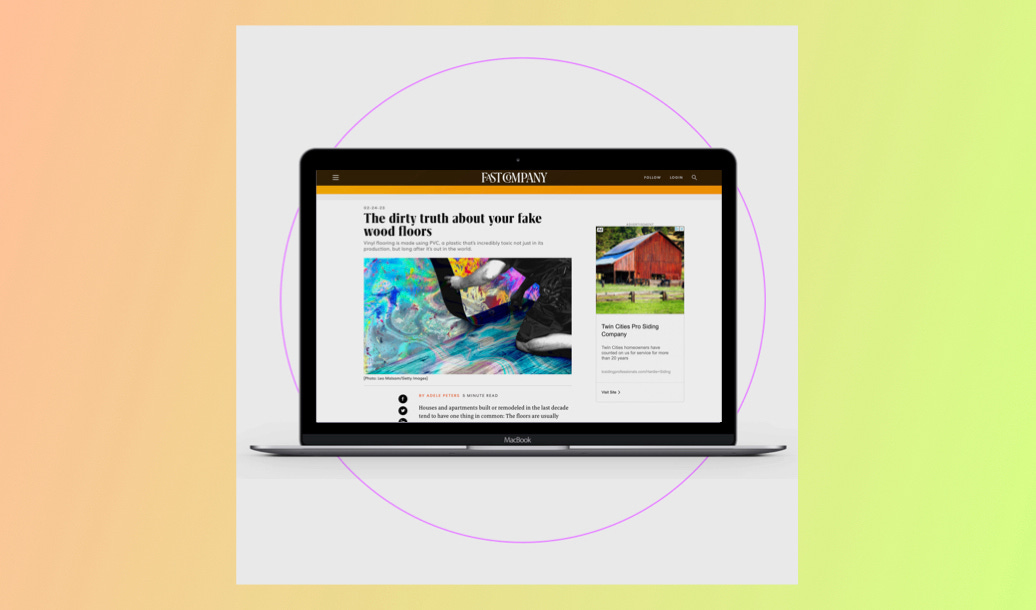No One Saw This Coming (Least of All, Me)
Part 1 of my “How I got here” story
Twice in the last few months, my own musings have turned into other people’s headlines.
First was the FastCompany story: “The dirty truth about your fake wood floors.” This was after I spent a a significant part of January and February trying to convince some bright entrepreneurs that I nearly went into business with that the first product for their new manufacturing technology should be tile and hard surface flooring. The green building product market is set to explode as demand for more sustainable flooring, drywall and insulation products skyrockets.

I wasn’t exactly “making” up the conclusion. When I worked in equity research, one of my companies was Floor & Decor. Last summer, my learning team pitched LL Flooring as an LBO candidate in our Foundations of Private Equity class at Columbia Business School. I’m not exactly a novice in the world of interior design and statistical trends. But when the FastCo story gained momentum with LinkedIn editors, suddenly everyone took notice. It felt like a big, “I told you so” moment.
Then along came the WSJ headline, “The Age When You Stop Feeling Young,” a riff on a topic I had already baked into my content calendar about millennials turning 40 and the retail implications for this milestone.
I’m hardly the first person to ever have their thoughts become someone else’s byline but now I’m interpreting it as a stronger signal that it’s time for me to speak up sooner. I want to shape the story. Scratch that. I want to tell the story. And in the event that I’m not breaking it, I want to help move the conversation forward.
A lot has been said recently about how quiet people in meetings are often the most insightful. These are the people that prefer to take in all the information, sort it out, and then respond with a viewpoint or suggestion that takes things in a new direction.
If anything motivates me, it’s that. The legacy of my late 30’s is about helping people wake up to new ideas, realizations, and opportunities. It’s taken me a really long time to figure out where I’m exceptional. It’s taken me even longer to figure out how to channel that into a professional pursuit. I thought I could get paid well to do that on Wall Street. It wasn’t a bad idea, but the lanes were fairly narrow.
I’m two sigmas from the mean at finding connections between things that most people see as unrelated. This is partially because I accumulate ideas, information, artifacts, and relationships. Think of me as a “collector.” I pay a lot of attention to what’s going on around me and store a ton of information. I’m a fast processor with a natural skepticism that feeds my curiosity. I am a non-linear thinker. Most people go, “A, B, C, D.” I am more likely to go, “A, D, C, B” and see to some reasonably likely endpoint by skipping over most of the middle steps. I gather enough information to reasonably validate my intuition. Then I move on to something else. I’m certainly willing to backtrack and revise my interpretations where they are wrong.
As Adam Grant says, “Changing your mind is not a sign of losing integrity. It’s the sign of gaining wisdom.”
Many people are extremely unnerved by my style of reasoning. For me, it’s natural. Writing gives me a channel to unpack my insights and cultivate an audience in so doing. Plus, I’m tired of other voices getting to market with the punchline before me.
During this launch phase, Consumerealm may feel a little scattershot. Media has usually tended towards repeatable formulas. Eventually, I might have to pick a lane and double down on it. For now, this is a beautifully messy media experiment.


